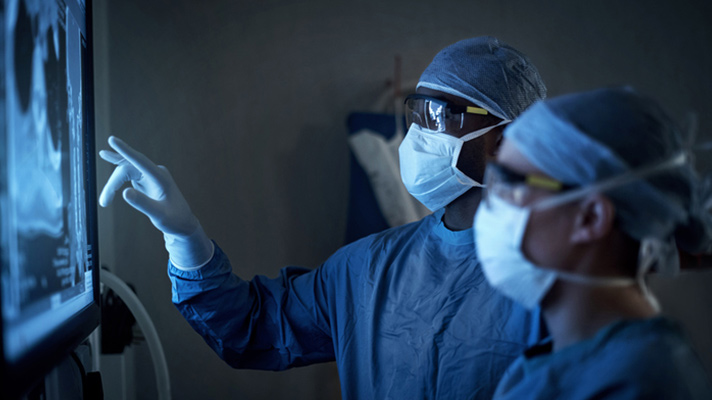
A report from the Radiological Society of North America (RSNA) indicates artificial intelligence (AI) and machine learning technologies could improve medical imaging.
The study, published in the Radiological Society of North America’s journal Radiology, noted AI systems are already being developed to improve medical image reconstruction and reduce noise and provide quality assurance, and it advocated for new machine learning methods for clinical imaging data, such as tailored, pre-trained model architectures and distributed machine learning methods.
"The scientific challenges and opportunities of AI in medical imaging are profound, but quite different from those facing AI generally,” the report's lead author, Curtis Langlotz said in a statement.
Langlotz, a professor of radiology and biomedical informatics and director of the Center for Artificial Intelligence in Medicine and Imaging, explained the goal of the report was to provide a blueprint for professional societies, research labs, and other working in the field to accelerate research toward AI innovations.
The report also calls for more research into automated image labeling and annotation methods, including information extraction from the imaging report, electronic phenotyping, and prospective structured image reporting. Each of these technologies could be used to enhance data sets, data engineering, and data science that would lead to the successful deployment of AI applications in medical imaging.
Other research priorities highlighted in the report include:
• new machine learning methods for clinical imaging data, such as tailored, pre-trained model architectures, and distributed machine learning methods,
• machine learning methods that can explain the advice they provide to human users (so-called explainable artificial intelligence), and
• validated methods for image de-identification and data sharing to facilitate wide availability of clinical imaging data sets.
Other research priorities include the use of image reconstruction methods to more efficiently produce images suitable for human interpretation, and new image reconstruction and labeling methods, machine learning algorithms and explanation methods.
The report also describes innovations that could help to produce more publicly available, validated and reusable data sets, against which chief digital officers can evaluate new algorithms and techniques.
In order to be useful for machine learning these data sets require methods to rapidly create labeled or annotated imaging data, the report noted.
Moreover, novel pre-trained model architectures, tailored for clinical imaging data, must be developed, along with methods for distributed training that reduce the need for data exchange between institutions.
In laying out the foundational research goals for AI in medical imaging, the report stressed the importance of collaboration between standards bodies, professional societies, governmental agencies, and private industry.


